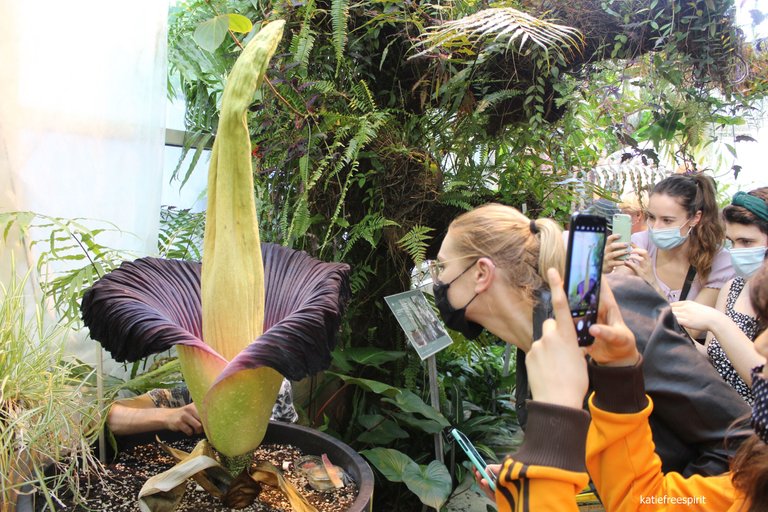
Since yesterday, in the greenhouse in the Botanical Garden in Warsaw, you can see a Titan arum (Amorphophallus titanum), an exotic plant whose natural environment is tropical Sumatra. And something I did not expect happened, crowds of people want to see the plant. It only blooms for one day or two and yesterday the botanical garden extended its opening hours, the last people saw this plant at 3 am. I was even wondering if I should go there at night, but I didn't want to stand in a 2-hour queue!
Od wczoraj w szklarni w Ogrodzie Botanicznym w Warszawie można zobaczyć dziwidło olbrzymie, egzotyczną roślinę, której środowisko naturalne to tropikalna Sumatra. I stało się coś, czego bym się nie spodziewała, roślinę chcą obejrzeć tłumy ludzi. Kwitnie ona tylko przez jeden dzień albo dwa i wczoraj ogród botaniczny wydłużył godziny otwarcia, ostatnie osoby oglądały dziwidło o 3 w nocy. Nawet zastanawiałam się, czy nie pojechać tam w nocy, ale nie chciałam stać w 2h kolejce!
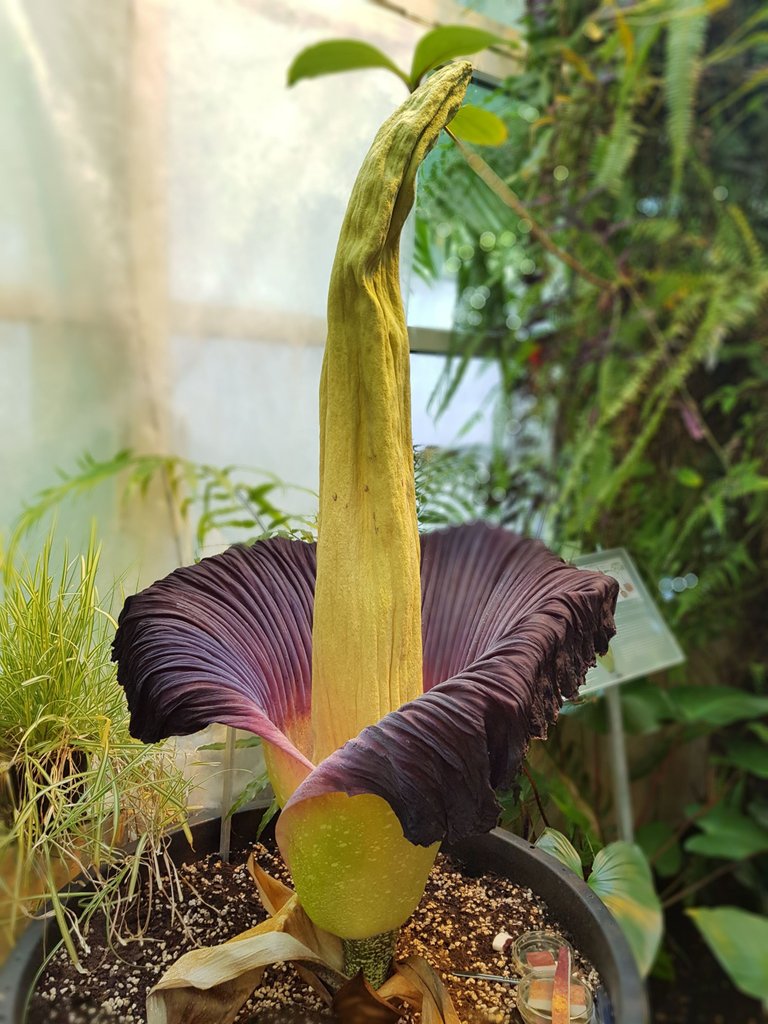
Today I also spent a lot of time in the queue, but the weather was nice, I went out to visit the garden a few times in the meantime and it was certainly much nicer than on a rainy Sunday night. And now I will write to you about a plant that has become the most popular plant in Warsaw for one day ;) During flowering it gives off a very unpleasant smell, the person standing next to me said that it resembled carrion, someone else said that it smells of dung. It reminded me of the smell from the toilet. In the wild, the plant thus wants to attract pollinators to itself.
The smell is most intense at night when the Titan arum attracts scavenging beetles that feed mainly at night: Diamesus (omarlicidae), Creophilus (scarabaeidae) and Scarabaeidae, as well as hymenoptera from the sagittarius family. The seeds are shed by a rhinoceros hornbill.
Source: Wikipedia.
Dzisiaj też sporo czasu spędziłam w kolejce, ale była ładna pogoda, kilka razy wyszłam w międzyczasie na zwiedzanie ogrodu i na pewno było dużo przyjemniej niż w niedzielną, deszczową noc. A teraz napiszę wam o roślinie będącej powodem całego zamieszania :) Podczas kwitnienia wydziela ona bardzo nieprzyjemny zapach, osoba stojąca obok mnie powiedziała, że przypomina padlinę, ktoś inny powiedział, że pachnie gnojem. Mi przypominała zapach z toalety. W środowisku naturalnym roślina w ten sposób chce przyciągnąć do siebie zapylaczy.
Zapach najintensywniejszy jest w nocy, wtedy też dziwidło przyciąga żerujące głównie nocą padlinożerne chrząszcze: Diamesus (omarlicowate), Creophilus (kusakowate) oraz Scarabaeidae, a do tego błonkówki z rodziny smuklikowatych. Nasiona rozsiewane są przez dzioborożca żałobnego.
Źródło: Wikipedia
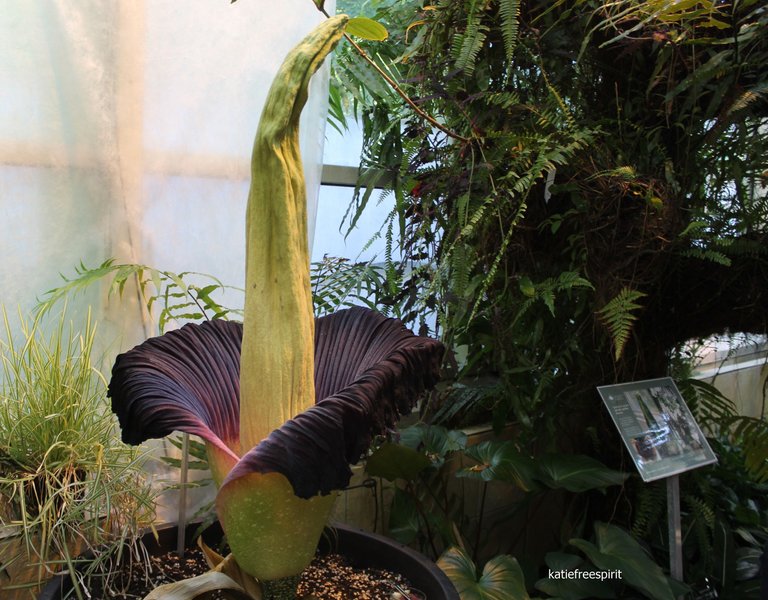
It's amazing how quickly the plant fades. Already today, about 5 pm, the tip of the Titan arum has bent sharply, and tomorrow it will probably fall completely. I am glad that I had time to see it live during flowering because this plant looked wonderful. I really liked the purple calyx, the lower part, which had lots of bright spots, and the huge vertical cob.
To niesamowite, jak szybko roślina przekwita. Już dzisiaj ok.17 czubek dziwidła mocno się przekrzywił, a jutro pewnie całkowicie opadnie. Cieszę się, że zdążyłam zobaczyć ją na żywo podczas kwitnienia, bo ta roślina wyglądała cudownie. Bardzo mi się podobał purpurowy kielich, część dolna, na której było mnóstwo jasnych cętek i ogromna pionowa kolba.

Titan arum was "discovered" and first described in 1878 in Sumatra by the Italian botanist Odoardo Beccari (1843-1920). The plant blooms rarely in nature and even less frequently in breeding. The first flowering takes place almost 10 years after the tuber has taken root, and the next flowering every 3-6 years. After pollination, during the second night of flowering, the temperature of the flask rises (evaporation can be seen), causing the dust debris to collapse and the leaf-like sub-inflorescence plant to close to protect the pollinated female flowers.
Source: Wikipedia
Dziwidło zostało "odkryte" i opisane po raz pierwszy w 1878 r. na Sumatrze przez włoskiego botanika Odoardo Beccariego (1843-1920). Roślina kwitnie rzadko w naturze, a jeszcze rzadziej w hodowli. Pierwsze kwitnienie następuje blisko 10 lat po ukorzenieniu się bulwy, następne co 3‒6 lat. Po zapyleniu, w trakcie drugiej nocy kwitnienia, temperatura kolby wzrasta (można dostrzec parowanie), przez co resztki pyłu opadają, a podobny do liścia twór podkwiatostanowy zamyka się, chroniąc zapylone żeńskie kwiaty.
Źródło: Wikipedia
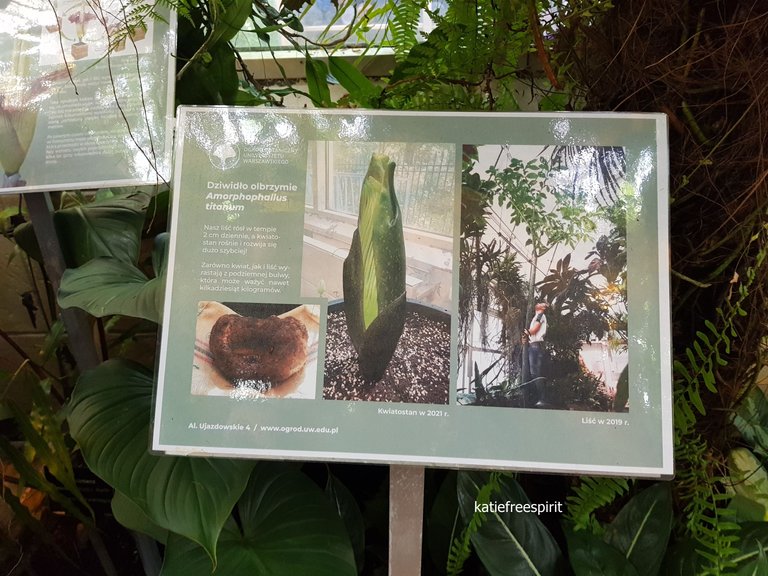
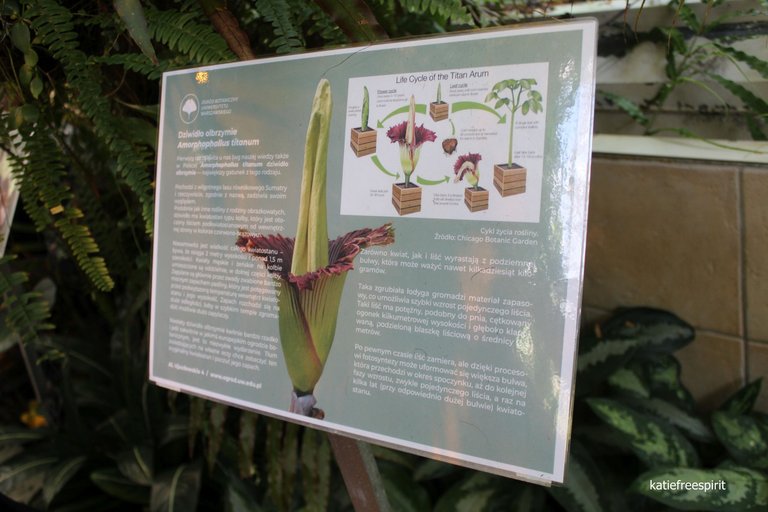

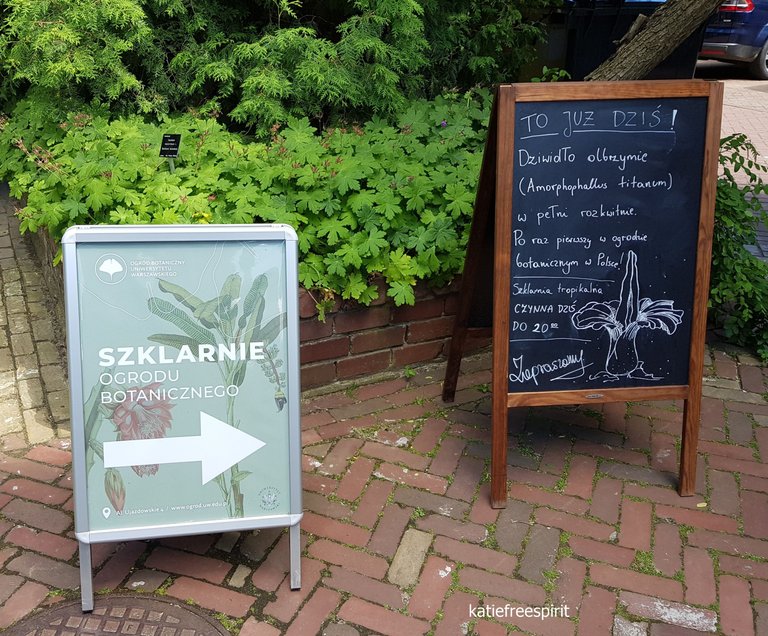
This was the long queue to the greenhouse where the freak was blooming.
Tak wyglądała długa kolejka do szklarni, w której kwitło dziwidło.


The signs indicating which way to go to see the Titan arum looked so cool. Someone painted this plant very nicely with chalk.
Tak fajnie wyglądały tabliczki wskazujące, w którą stronę iść, żeby zobaczyć dziwidło. Bardzo ładnie ktoś namalował tę roślinę kredą.
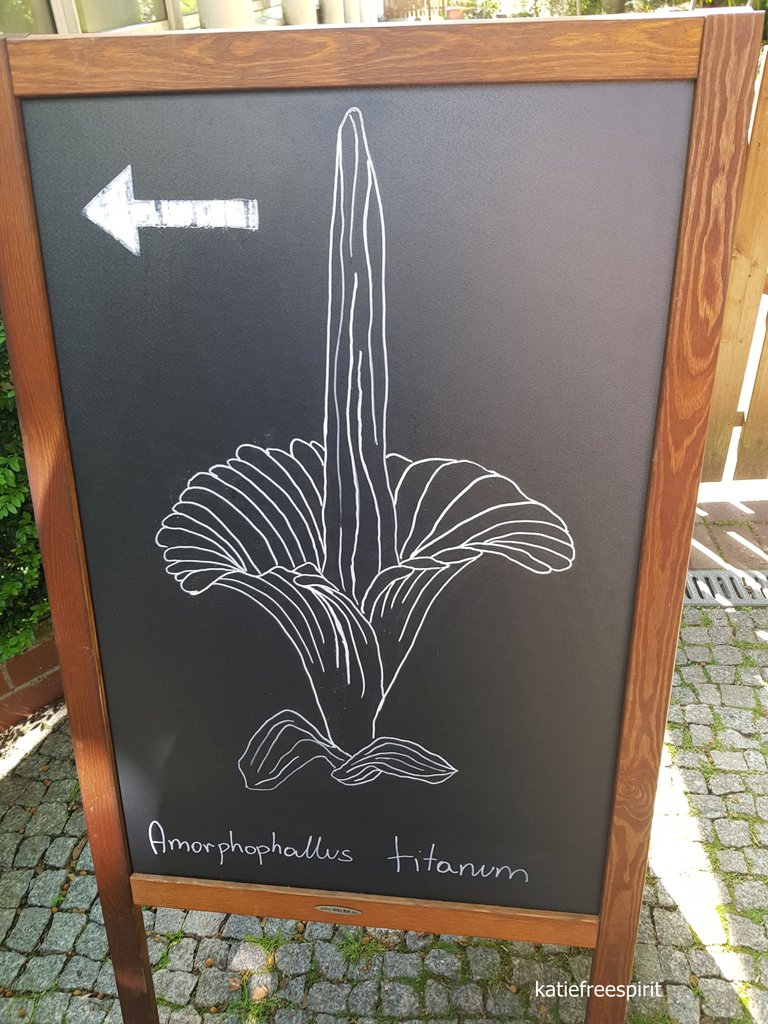
There were a lot of people in the greenhouse, before I got to the plant (even though I was already in the greenhouse! :)), it was probably half an hour. Although there were a lot of interesting tropical plants around me (I will write a separate post about them later) and standing in a queue in such a place was much nicer than outside.
W szklarni znajdowało się bardzo dużo ludzi, zanim dotarłam do rośliny (mimo, że byłam już w szklarni! :)), minęło chyba z pół godziny. Aczkolwiek dookoła mnie było dużo ciekawych, tropikalnych roślin (napisze jeszcze o nich osobny post) i stanie w kolejce w takim miejscu, było dużo przyjemniejsze niż na zewnątrz.
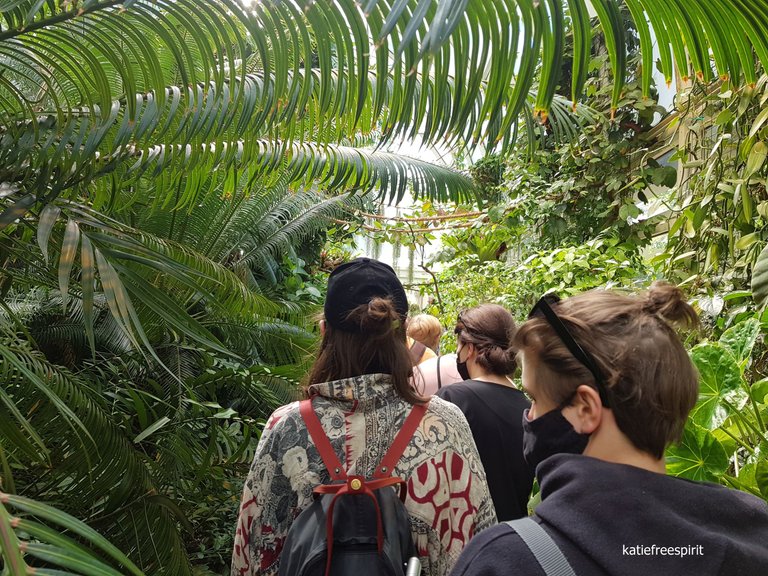
And here it is - the Titan arum (Amorphophallus titanum) in all its glory. How do you like it?
I oto jest - dziwidło wielkie w pełnej okazałości. Jak wam się podoba?
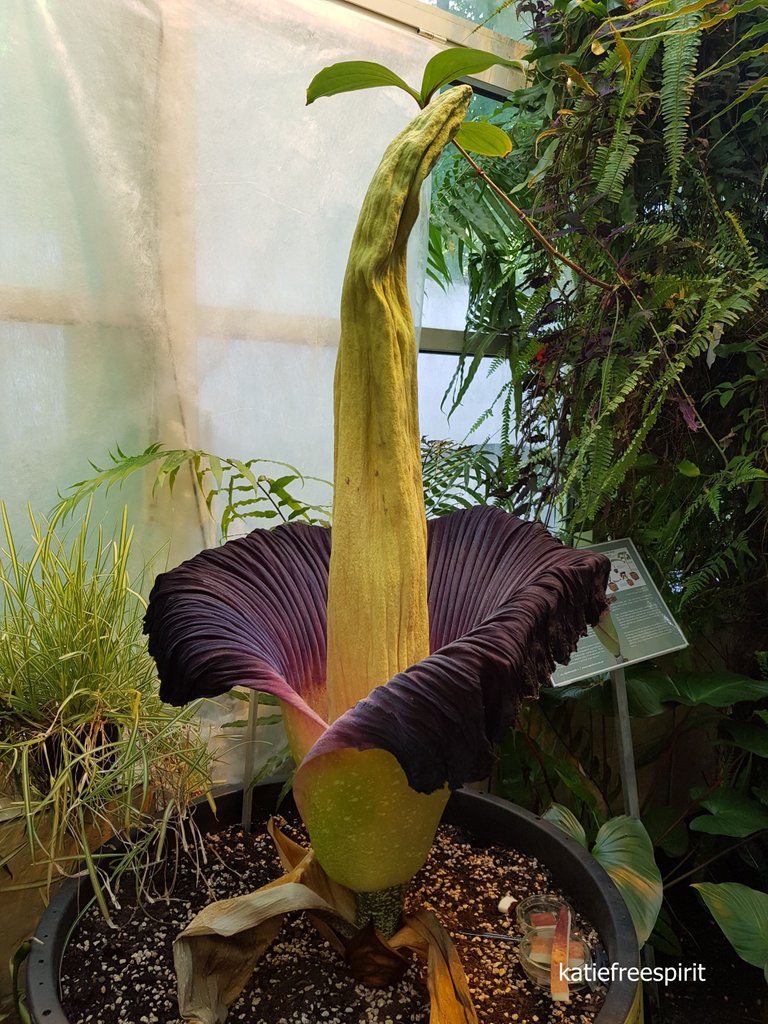
Botanical garden staff took some tissues from this plant for research.
Pracownicy ogrodu botanicznego pobierali jakieś wycinki z tej rośliny do badań.
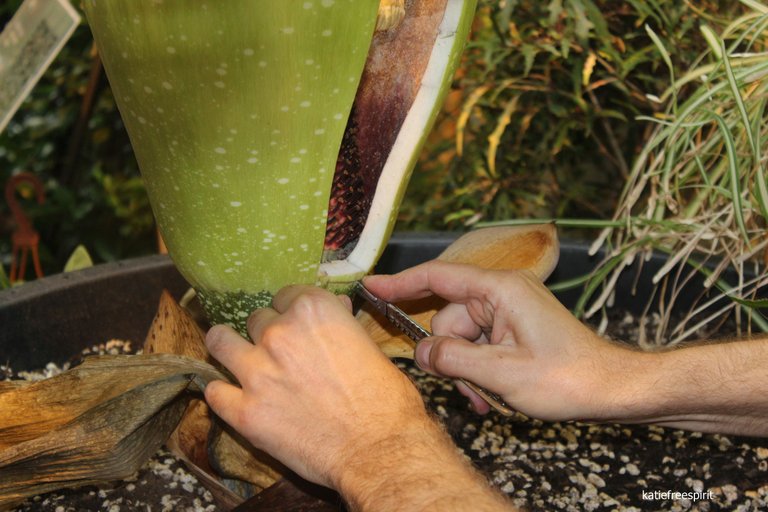
We appreciate your work and your post has been manually curated by @redheadpei on behalf of Amazing Nature Community. It will be added to the weekly botany curation post. Keep up the good work!
@redheadpei thank you very much for your appreciation and support 😊🌸
Most welcome @katiefreespirit.🌸
I see some people with the mask and others do not have it, sorry but now it is what I observe more consciously or unconsciously, perhaps because I am tired of so much protocol, well I have already unburdened myself, it has been a long time since I went to a botanical garden , thanks for sharing
Hi @lupega, there are currently very few new cases of covid in my country (215 yesterday) and various restrictions have been lifted. You do not need face masks in the open air, only indoors and in public transport. It was a wonderful day in a beautiful place. I'm very happy that I could go to this botanical garden. I'll write more about it soon on my blog. Have a nice day :)
Congratulations, your post has been added to Pinmapple! 🎉🥳🍍
Did you know you have your own profile map?
And every post has their own map too!
Want to have your post on the map too?
The infamous "stink plant" corpse flower strikes again! Definitely one time the public gladly wore face masks!👃😷💩
Probably in countries where this plant is known, its smell is noticed and many people do not like it, even though it looks nice. It bloomed for the first time in my country and many people were delighted with it. This shows how in some places something can be considered a treasure, and on the contrary - something nasty in others. Although in this case really disliked face masks came in handy 😉😂
faktycznie dziwidło :-)
Ciekawa ta roślina, fajnie że była możliwość obejrzenia jej na żywo.;-)